Book your Whale Watching or Harbor Tour today and save more with Plan Ahead Pricing!
DAILY 45-Minute Harbor Tour from LONG BEACH
Set Sail with Harbor Breeze Cruises – Your Gateway to the Wonders of Long Beach Harbor!
Join us as we explore Long Beach's coastline. You will learn history about the harbor as well as see the beautiful Long Beach skyline, California Sea Lions playing in the harbor, the world-famous Queen Mary, large cargo and container ships from all over the world, and much more!
Embark on an unforgettable journey with Harbor Breeze Cruises! Whether you're a history buff, nature enthusiast, or just looking for a unique way to spend your day, our 45-minute fully narrated harbor tours are the perfect escape. Discover the majestic Long Beach skyline, playful California sea lions, and the iconic Queen Mary. Dive into the vibrant history of the harbor and spot impressive cargo ships from around the globe.
Located at Long Beach Rainbow Harbor, adjacent to the Aquarium of the Pacific at Dock #2. Easy access via the 710 South—follow the signs to the aquarium.
Call us at 562-983-6880 (9 am – 5 pm) or visit our other websites for more information.
Beyond our daily tours, explore our special offerings:
Harbor Breeze Cruises is currently offering 45-Minute Harbor Tour from LONG BEACH
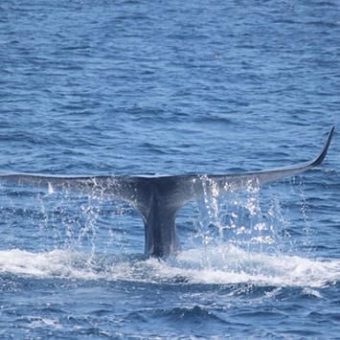
Blue Whale
The largest known mammal in the world at up to a hundred feet, the Blue Whale (Balaenoptera musculus) ranges all over the oceans. In July through October, the species migrates into the area of the west coast and are most likely to be seen in July and August. Once critically endangered, their population is now on the rise as they move back and forth between breeding grounds in the south and feeding grounds in the north.
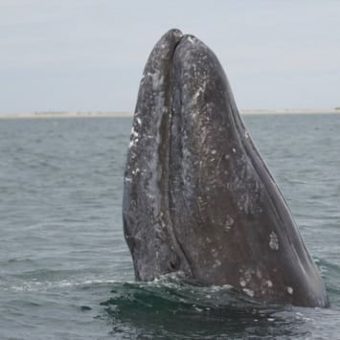
Gray Whale
Slate-colored and dappled with white spots, Gray whales (Eschrichtius robustus) are visually distinctive from other species. At about half the length of a Blue Whale, they're capable of breaching the water- leaping into the air and coming back down on the ocean's surface. During their migration, they pass by the West coast in December and January, tending to be more visible due to their breaching habits.
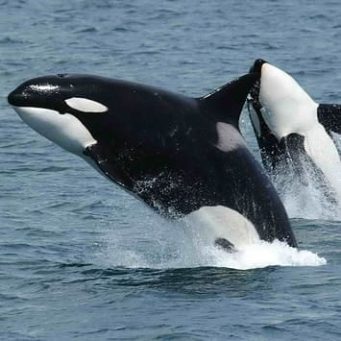
Orca (Killer Whale)
More closely related to dolphins than to other whales, Orcas (Orcinus orca) are highly sophisticated animals. Pack predators, Orca will stay with family groups and hunt other marine life with pack tactics reminiscent of wolves. Each family group, or pod, has its own unique song passed down among the population. They are mostly seen in the summer, though their migration patterns remain a mystery.
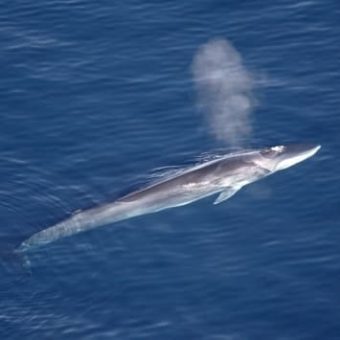
Fin Whale
Fin Whales (Balaenoptera physalus) are more closely related to Blue Whales, being closer to their length at sixty feet, though they're much faster in the water. They're often recognizable for their arching, where they poke their dorsal fin above the water when preparing for a dive. While they can be seen year-round, the best sightings are during November and March.
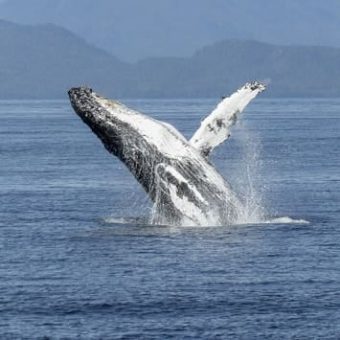
Humpback Whale
Humpbacks (Megaptera novaeangliae) are one of the more famous and widely known whale species, though they tend to be mid-sized at around fifty feet. They're also known for their complex and lengthy songs, with the song of males lasting as much as twenty minutes, as well as their habit of breaching often, throwing themselves above the water and coming back down with a splash. They are most often seen during the summer on the West coast.
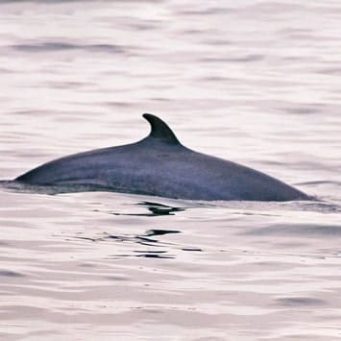
Minke Whale
Minke whales (Balaenoptera acutorostrata) are the second smallest baleen whale, measuring in at around only twenty-five feet. Sightings of this whale along the West coast are rare, as they mostly show themselves farther north, and are more common on the East coast. They are also the hardest to spot, given their lack of breaching and their ability to dive as long as twenty minutes. Most sightings will be in June and July, when Minkes migrate.
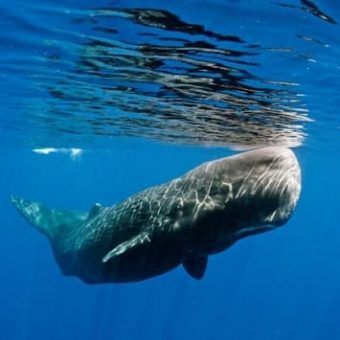
Sperm Whale
Sperm whales (Physeter macrocephalus) have one of the most famous of appearances, possessing a large, rounded snout with a mouthful of teeth. The Sperm whale is the largest toothed predator in the world, being around sixty eight feet in length, and possesses the largest brain of any known animal, extinct or modern. They surface for up to eight minutes to breath between dives that last as long as an hour and might range in depth up to six thousand feet. Sightings are one of the rarest of all the whales, but, for many, the most rewarding.
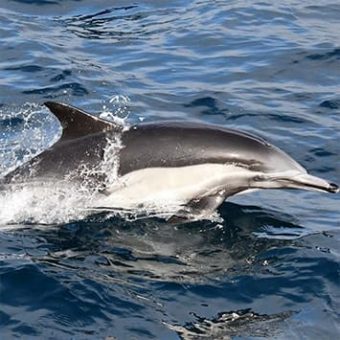
Dolphins
Many dolphins inhabit the West coast, though the common dolphin in particular may always be seen in large numbers. Dolphins of all species are famous for their intelligence, curiosity and playfulness, as well as their apparent altruism regarding humans and other species. Often, dolphins will swim up to a boat to investigate it, and will jump from the water in many cases to have a better look, or simply as a form of play.

Wildlife
There is a large amount of marine wildlife native to the area, including a wide variety of birds, seals, and fish. Multiple types of seals in particular inhabit the area, ranging from harbor seals to spotted seals and more, adorable staples of marine life in the area. These animals can always be sighted amongst the waves and rocks, some more than others, and even the occasional shark sighting!
OUR REVIEWS